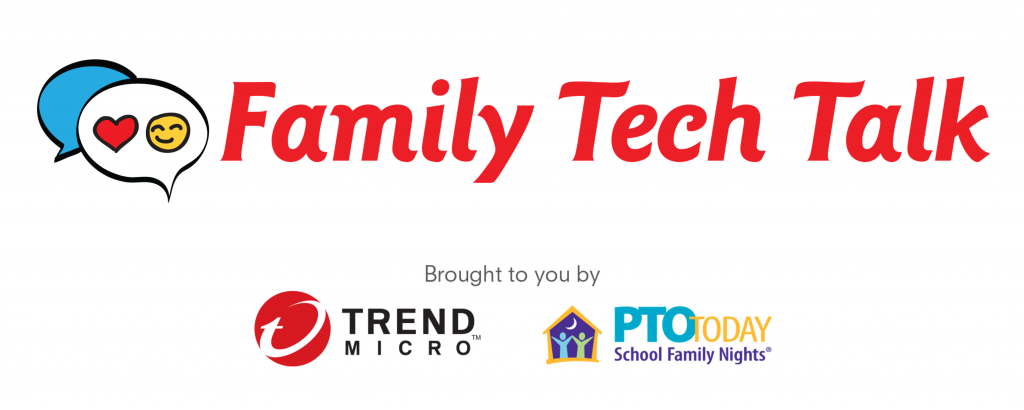[ad_1]
We’re back with the second part of this two-part series where we answer the most pressing questions today’s parents have about technology and their families. All questions were asked by parents at our Family Tech Talk Night events, which we’ve been hosting for several years as part of Trend Micro’s Internet Safety for Kids and Families initiative. Joining the events, which are held in English and Spanish, is absolutely free. To learn more about them and how you can get involved, click here.
Note. If you haven’t read the first part, be sure to do so by clicking here.
#6 – Where can I learn the various online slang/abbreviations used by teenagers today?
Some of the slang/abbreviations used by teenagers today may sound like a completely different language. For parents, this can pose a challenge when it comes to keeping their children safe from online bullies and predators. Below are some of the most important ones to be aware of.
- Be is someone’s significant other/romantic partner
- BF/GF — Boyfriend/Girlfriend
- DTF — To hell with it
- KMS – kill yourself (KYS – kill yourself)
- Netflix and Relaxation – Connecting with Netflix
- TDTM — Talk to me badly
- WTF — What the hell
Click here for the top 50 online slang that parents need to know.
For a list of online gaming slang, click here.
A guide to Instagram slang and hashtags can be found here.
#7 – How can I protect my child’s online accounts?
By far, the best thing you can do to protect your online account is to enable two-factor authentication (2FA). Two-factor authentication — also called multi-factor authentication (MFA) — will make your child’s online accounts more secure by requiring them to provide two separate forms of identification to sign in.
Traditionally, logging into an online account requires a username and password (the password is the first form/factor of identification). However, when 2FA is enabled, your child will need to provide an additional form of identification, such as a code sent to their phone number, before they can sign in to their account. According to Google, 2FA via SMS helps “block 100% of automated bots, 96% of mass phishing attacks, and 76% of targeted attacks.”
Instructions for enabling 2FA will vary slightly by account, but can usually be done in the security/privacy section of the settings menu.
When it comes to teaching kids about the importance of online safety, privacy and well-being, you’ll want to check out Trend Micro’s Cyber Academy. There are currently modules on 2FA, passwords, online security and more, and more modules are being added all the time.
#8 – Is there anything I need to do with my smartphone/tablet before I let my child use it?
Here are some things to do/think about before giving your child a smartphone or tablet:
- Adjust settings to prevent unauthorized purchases from the app store. You can set iPhone/iPad/Android devices to require a passcode that you won’t tell your child to authorize app store purchases. Click here for detailed instructions for iPhone/iPad or here for Android.
- Set a PIN/password. This will prevent anyone but your child from using their device. Be sure to teach your child how important it is not to share your PIN/password with others.
- Install Trend Micro Family. Available completely free of charge, Trend Micro Family is the only tool parents need to keep their children safe online 24/7. The app can block age-inappropriate images and videos, show you what your child is searching/watching online, ensure their social media privacy settings are optimal, and much more. Click here to learn how to get started with Trend Micro Family.

- Discuss expected screen time. No parent wants their child to be tethered to their device all the time, so be sure to set rules/expectations for when they can and can’t use it. You can also set screen time limits on their device. This can be done natively on Apple devices (click here for instructions) and with Trend Micro Family on Android devices.
#9 — What apps/websites should parents know about?
Here is a list of popular apps/websites that parents should be aware of:
- Snapchat is a multimedia instant messaging application. Photos are videos sent via Snapchat, usually only available for a short period of time.
- TikTok is a social media platform used by young people to create, share and view short videos.
- Instagram is a social media platform that is very popular among teenagers/young adults.
- Tinder is a dating app.
- Kik Messenger is a messaging app that is especially popular among teenagers.
- Tumblr is a microblogging and social networking website popular among teenagers.
- 4chan is an anonymous imageboard website mainly used by teenagers and young adults.
#10 – How can I teach my child not to share online?
Trend Micro Cyber Academy is perfect for this. Its quizzes, worksheets and animated videos make learning fun. All the modules are great, but to teach kids about privacy and safety online, the following modules are perfect: Security, Privacy, and Security Settings.
An evening of conversation about family technologies Trend Micro
Raising kids in the digital age is no easy task, so why not join us for one of our virtual Family Tech Talk sessions — as seen on NBC10Boston — and get the lowdown on everything today’s parents need to know? We offer events throughout the school year, so we encourage you and your school community to come along!

To learn more about Family Tech Talk Nights and to register for the event, click here.
[ad_2]
Source link
